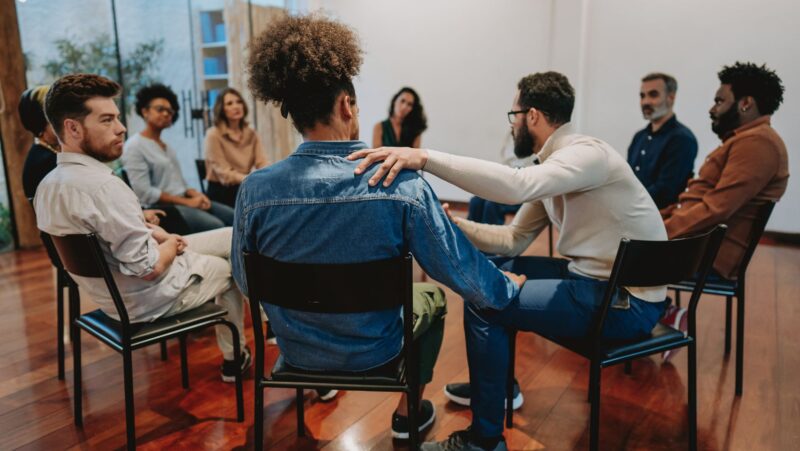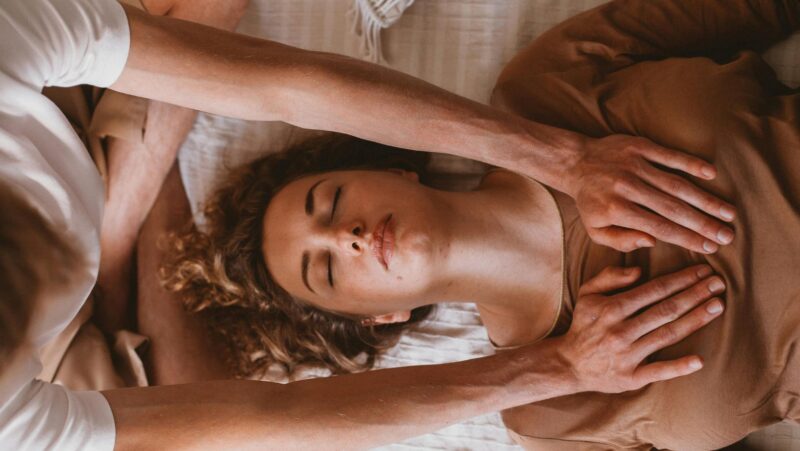
I’ve always been fascinated by the idea of minimalism. Stripping away the excess to focus on what truly matters feels like a breath of fresh air in our cluttered world. But minimalism isn’t just about getting rid of stuff; it’s also about finding a sense of grounding and peace in simplicity.
Grounding, or connecting with the earth, complements minimalism perfectly. When I declutter my space and mind, I feel more in tune with my surroundings and myself. It’s amazing how these two concepts work hand in hand to create a more balanced and intentional life. Let’s dive into how embracing minimalism and grounding can transform your daily living.
Key Takeaways
- Minimalism Enhances Well-being: Adopting minimalism helps reduce stress, improve focus, achieve financial freedom, and foster a serene state of mind.
- Grounding Improves Health: Grounding, or earthing, connects you with Earth’s natural energies, potentially reducing inflammation, stress, and chronic pain.
- Complementary Practices: Minimalism and grounding work well together, creating a balanced and intentional lifestyle that promotes mindfulness and well-being.
- Practical Techniques: Grounding can be practiced through walking barefoot, using grounding mats, water immersion, or visualization exercises, while minimalism can be achieved by decluttering and mindful consumption.
- Real-life Examples: Influential figures like Joshua Fields Millburn, Ryan Nicodemus, and Marie Kondo showcase the transformative power of minimalism, while daily grounding practices can seamlessly integrate into one’s routine for enhanced health and peace.
Understanding Minimalism
Minimalism is a lifestyle choice that prioritizes simplicity and intentional living. It involves valuing experiences over possessions and focusing on what truly adds value to one’s life.
The Philosophy Behind Minimalism
Minimalism encourages the notion that less is more. It traces back to various cultural and philosophical traditions, including Buddhism’s teachings on non-attachment and the Western concept of simple living. The core idea is to strip away excess and concentrate on essential elements. This doesn’t imply deprivation but rather cherishing fewer, higher-quality possessions. I find that this approach cultivates a sense of purpose and clarity, allowing me to invest energy in meaningful activities and relationships.
Benefits of Minimalism
Minimalism offers numerous advantages that enhance overall well-being.
- Reduced Stress: Fewer possessions mean less to manage, reducing anxiety and mental clutter.
- Financial Freedom: Lower consumption leads to fewer expenses, fostering savings and financial stability.
- Enhanced Focus: By eliminating distractions, I can concentrate better on my goals and passions.
- Environmental Impact: Consuming less contributes to sustainability, aligning with ecological values.
- Improved Well-being: A minimalist environment leads to a more serene, calm state of mind.
The benefits underscore how minimalism is not just a physical decluttering but a holistic approach to intentional living that positively impacts various aspects of life.
Principles of Grounding
Grounding, also known as earthing, involves connecting with the Earth’s natural energies. It’s both a practice and a state of mind that helps stabilize emotions and mental states.
What Is Grounding?
Grounding refers to a set of techniques designed to reconnect our bodies to the Earth’s surface. This connection is believed to balance energy and improve well-being. At its core, grounding emphasizes the physical connection with the Earth, which can be as simple as walking barefoot on grass or soil. Studies suggest that this direct contact may help reduce inflammation, stress levels, and chronic pain. For more information on grounding practices and products, visit here.
Grounding Techniques and Practices
Several grounding techniques exist that cater to varied preferences and lifestyles. Here are some common methods:
- Walking Barefoot: Engaging in this practice on natural surfaces like grass, sand, or dirt can enhance feelings of connectedness.
- Grounding Mats: These mats mimic the Earth’s electrical current and can be used indoors by placing them under feet during activities like working or sleeping.
- Water Immersion: Immersing oneself in natural water bodies such as oceans, lakes, or rivers can provide grounding effects.
- Visualization: Visualizing the process of grounding while meditating or practicing mindfulness can also foster a sense of stability and connection.
Incorporating these techniques into daily routines can help create a balanced and calming environment.
Connection Between Minimalism and Grounding
Minimalism and grounding share a mutual goal of enhancing well-being by fostering simplicity and mindfulness. These practices complement each other, leading to a balanced and intentional lifestyle.
How Minimalism Supports Grounding
Minimalism clears physical and mental clutter, making grounding practices more effective. By eliminating excess items, I create an environment that promotes focus and calm. This simplicity helps ground myself, reducing distractions and honing attention on essential elements.

Physical spaces free of clutter foster a direct connection with natural surroundings. For example, a minimalist home with few, well-chosen items opens up space for natural light and airflow. This openness enhances the grounding effect, whether achieved through grounding mats or barefoot walks.
Additionally, minimalism encourages mindful consumption, supporting a deeper appreciation for nature. Consuming less aligns with the principles of grounding, where connecting with the Earth requires mindfulness about our environmental impact.
Practical Applications
Several practical applications combine minimalism and grounding seamlessly. Simplifying digital spaces, for instance, reduces virtual clutter, helping me stay grounded in the physical world. Limiting my screen time and decluttering my devices create mental space for mindfulness and tranquility.
Incorporating natural materials into my minimalist spaces strengthens the connection between minimalism and grounding. For example, wooden furniture, cotton fabrics, and stone elements bring Earth’s essence indoors. These materials promote grounding by maintaining a tactile link to nature.
Another practical application involves creating specific spaces for grounding activities within a minimalist home. Setting up a designated barefoot walking area or a small, clutter-free zone for meditation can enhance the grounding experience. These spaces act as sanctuary zones where I can reconnect with nature and achieve a state of calm.
By integrating minimalism and grounding, I cultivate a lifestyle that values simplicity, mindfulness, and holistic well-being. The synergy between the two practices creates a haven for peace and intentional living.
Real-Life Examples
Here are some real-life examples showcasing the impact of minimalism and grounding in everyday life.
Minimalism Success Stories
Several individuals have embraced minimalism and transformed their lives. Joshua Fields Millburn and Ryan Nicodemus, founders of The Minimalists, reduced their possessions to fit into two suitcases after realizing material goods didn’t bring happiness. They now focus on meaningful relationships and personal growth, sharing their journey through books and a popular podcast.
Marie Kondo, creator of the KonMari Method, teaches decluttering by keeping only items that “spark joy.” Her approach not only organizes spaces but also changes people’s mindsets about consumption and gratitude. Clients often report feeling liberated and more focused after implementing her method.
Courtney Carver, known for Project 333, advocates for a minimalist wardrobe. She encourages people to wear 33 items or fewer for three months. Many participants discover that fewer choices lead to more confidence and reduced decision fatigue, enhancing their overall well-being.
Grounding in Daily Life
Grounding techniques can be easily integrated into daily routines. Walking barefoot on grass, sand, or soil for 15 minutes a day helps balance the body’s electrical charge, reducing stress and inflammation. I spend time each morning doing this, finding it incredibly centering and calming.
Using grounding mats and sheets indoors provides the benefits of direct earth contact. Studies show these tools can improve sleep quality and reduce pain. I use a grounding mat while working at my desk, which enhances focus and reduces fatigue.
Water immersion is another effective grounding practice. Bathing in natural bodies of water or even taking cold showers at home can reconnect you with Earth’s energy. Every week, I take a swim in a nearby lake, feeling a noticeable boost in my mood and energy levels afterward.
Visualization exercises also play a role. Imagining roots growing from your body into the Earth can create a sense of stability and security. I practice this daily during meditation, finding it a powerful way to ground my emotions and thoughts.
Conclusion
Minimalism and grounding have profoundly influenced my life by fostering simplicity and mindfulness. Embracing minimalism has allowed me to strip away excess and focus on what truly matters, creating a sense of purpose and clarity. Grounding practices have complemented this by connecting me to the Earth’s natural energies, stabilizing my emotions and mental state.
By integrating these two practices, I’ve created a balanced and calming environment that enhances my overall well-being. Whether it’s through decluttering my physical space or walking barefoot on natural surfaces, these practices have become essential elements of my daily routine. They offer a holistic approach to intentional living, making my life more peaceful and meaningful.
Frequently Asked Questions
What is minimalism?
Minimalism is a lifestyle choice that prioritizes simplicity and intentional living. It involves decluttering physical possessions and focusing on what truly matters, such as experiences and essential elements.
How does minimalism reduce stress?
Minimalism reduces stress by eliminating excess and distractions, which creates a more peaceful and organized environment.

This helps individuals focus on what is truly important, leading to a sense of clarity and calm.
What are the benefits of minimalism?
The benefits of minimalism include reduced stress, financial freedom, enhanced focus, positive environmental impact, and improved overall well-being. It encourages intentional living and mindfulness.
Grounding, also known as earthing, involves connecting with the Earth’s natural energies to stabilize emotions and mental states. It complements minimalism by promoting a simplified, mindful lifestyle that enhances well-being.
What are some common grounding techniques?
Common grounding techniques include walking barefoot on natural surfaces, using grounding mats, water immersion, and visualization exercises. These practices reconnect the body to the Earth’s surface.
How can minimalism and grounding be combined in daily life?
Minimalism and grounding can be combined by simplifying digital spaces, incorporating natural materials into minimalist designs, and creating designated areas for grounding activities. This integration promotes a balanced and calming environment.
Who are some notable minimalists mentioned in the article?
The article mentions Joshua Fields Millburn and Ryan Nicodemus, known for reducing their possessions to focus on meaningful relationships, Marie Kondo with her KonMari Method, and Courtney Carver with Project 333 for a minimalist wardrobe.
Can grounding techniques really improve mood and focus?
Yes, grounding techniques can improve mood and focus by stabilizing emotions and connecting with the Earth’s natural energies. The article shares personal experiences and examples illustrating their positive impact on well-being.










